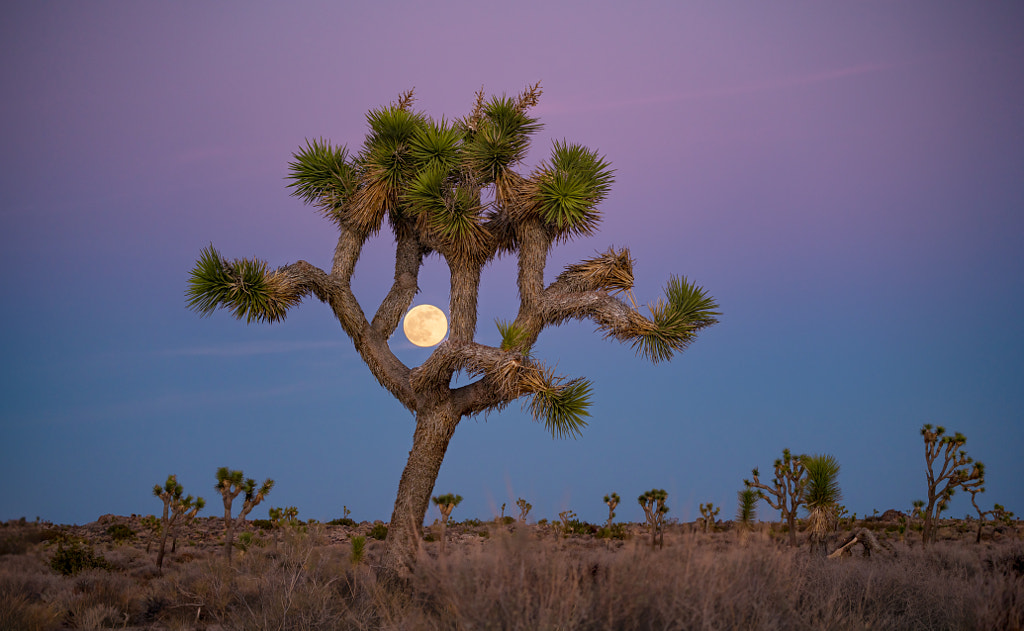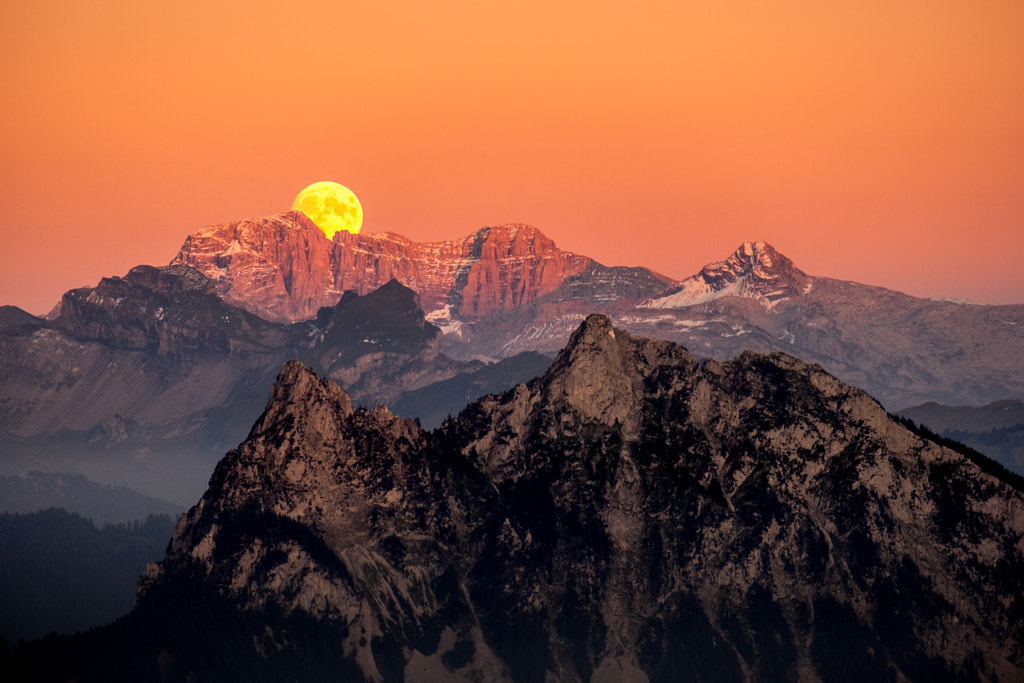How to Predict and Photograph the Perfect Moonrise

At least once a month, when there is a full moon, we can predict and photograph the perfect moonrise, creating unique and beautiful images.
Whilst it’s not without its challenges, photographing a moonrise is highly rewarding, and with the help of a variety of apps, and some forward planning, you could be taking stand-out moonrise photographs in no time.


In this guide, we will look at everything you need to know to photograph a moonrise or a moonset, from planning and preparation, to useful apps and equipment you might need.
What is a moonrise
The term ‘moonrise’ refers to the time at which the moon rises above the Earth’s horizon. A moonrise happens when the Earth has rotated on its own axis enough that the moon appears in the portion of the sky that you are looking up at.
As such, a moonset refers to the time at which the moon disappears below the horizon.
The exact times depend on the lunar phase and declination (in astronomy, declination is the angular distance of a body north or south of the celestial equator.), as well as your location.
Read more: How to Photograph the Moon – An In-depth Guide
When is moonrise
We’ve been able to predict the moon’s position for centuries, but we’ve also been able to predict exactly where and when it’s going to rise.
All you need to do is use the prediction tools to find out where and when the moonrise will align with a sunset, and where and when the moonset will align with a sunrise.
To help us predict the moon’s position, there are several apps we can use to know where on the horizon to look for the moonrise, depending on where you are on Earth.
We recommend the following apps for your smartphone:
Photography gear to use for moonrise photos
Along with your camera and lens, a sturdy tripod is an essential part of your setup.
If you don’t have a rock-solid platform to shoot from, you won’t be able to capture tack-sharp images, no matter how good your camera or lens is.
Don’t forget, at the time of moonrise, you will be shooting in lower light conditions, using longer shutter speeds to let in more light.
The type of lens you use depends on your composition – do you want to capture the moonrise with foreground interest, or are you hoping to focus on details on the surface of the moon?
A wide-angle lens is a great choice for capturing the moon above an open landscape. To include more detail and texture in the moon, however, opt for a focal length of at least 200mm.
Read more: How to Photograph the Moon with Foreground
How to photograph a moonrise
We, photographers, are most interested in capturing a full moon during moonrise or moonset. However, a moon in its quarter phase can create great images too, with intriguing gradients of highlights to shadows to play with.
Planning is everything when it comes to moonrise photography. A moonrise happens very quickly, giving us little time to play with settings, exposure, and composition during the event.
We are also at the mercy of the weather, so it’s helpful to keep your eye on your local forecast. Don’t be disheartened if the weather isn’t in your favour though, as we see full moons at least once a month, so it won’t be long until you can try again!
Once you have picked the date and time you want to photograph a moonrise, and your gear is ready, it’s time to think about your shot. Depending on what foregrounds you want to include, you can start to plan your composition.
You can hold your phone camera up in your desired location, using one of the many apps available, and be told where the moon will be and in how long – all with a high degree of accuracy.
This means you can set up your composition, dial in your settings, and wait for the moon to come into the position you want.

You will also need to know how high above the horizon the moon is going to be if you want to line it up with a sunrise or a sunset. This is particularly helpful if you are hoping to photograph a moonrise or moonset in mountain ranges.
If you have a mountain that rises high above the horizon, you may even need to photograph that moonrise or moonset a few days before or a few days after the full moon to align the elements together.
Best camera settings for photographing the moon
Night photography settings may seem daunting at first, but with a little practice and experimentation, you will be able to find what settings work best for you, and for the sky scene you are capturing.
First off, always shoot in raw. This will help you capture plenty of details in the moon, and allows you to make adjustments to white balance when post-processing.
It’s also good practice to use manual focusing instead of autofocus. In order to focus your lens, simply zoom in on the moon using your live view, and carefully set your focus. If the moon is yet to rise, pick a bright point in the distance (the light of a house, a bright star or planet, etc) and focus in on that.
You can then tape off the point at which your lens is fully focused.
If you are photographing a bright, full moon during a moonrise, start by shooting wide open at f/4 with a relatively high ISO such as 3200 or 6400, and go from there using this guide for nightscape camera settings.
If you are shooting a moon in its quarter phase, there will be less ambient light to play with, so you will need to consider using an f/2.8 lens (or faster).
In conclusion
Photographing a moonrise can produce stand-out images and memorable moments behind the lens.
With the help of this article and a bit of forward planning, you’ll be taking incredible moonrise images in no time.
Don’t forget to share your images with us in the comments below!
This video was produced by Nature TTL, in partnership with B&H Photo Video.









